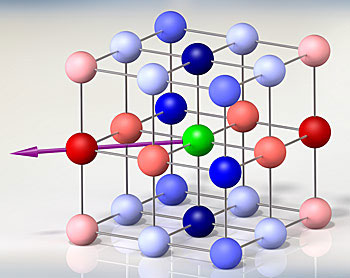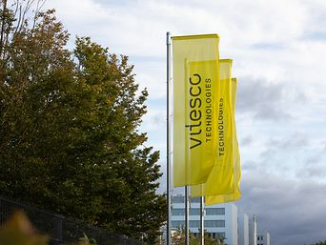A MagLab-made magnet that is more of a strong, silent type nonetheless made a loud splash when it broke the world record for an all-superconducting magnet.
Built with both traditional and novel superconducting materials, the magnet reached a field of 27 teslas on June 5 in a test that exceeded designers’ expectations. The magnet is a smaller version of an even more powerful magnet due for completion next year — a 32 tesla all-superconducting magnet that will be substantially stronger than any such magnet built to date.

Tesla (“T” for short) is a measure of magnetic field strength: A typical magnet used in an MRI machine is 2 to 3 T. The 27 T field reached last week was 3.5 T stronger than the strongest superconducting magnet currently in operation (in Lyon, France) and 1 T stronger than a superconducting test magnet built earlier this year in South Korea. For decades, engineering and materials advances have nudged the record up only bit by bit. Last week’s feat brings MagLab engineers to the home stretch of the seven-year 32 T project.
“It’s been a very difficult and long road — to such an extent that some people have wondered whether these magnets would ever become a reality,” said MagLab Director Greg Boebinger. “So to make such a huge stride with this next-to-final version of the magnet gives us great optimism that the completed 32 T magnet will perform to spec, representing the biggest breakthrough in superconducting magnet technologies, in terms of peak fields, since the mid 1970s.”
As the name suggests, superconducting magnets are made with superconducting materials – materials that carry current without the friction (and attendant heat) found in regular electricity. The catch with conventional low-temperature superconductors (LTS) is that they operate only at exceedingly cold temperatures — around -460°F. For the past three decades, almost all superconducting magnets have been made with niobium tin and niobium titanium wire, both LTS materials that need liquid helium to stay cold. But limits inherent to those materials have prevented engineers from making more powerful superconducting magnets.
Enter YBCO, a superconducting material discovered in 1986 that, after years of development, is expected to make its debut as a magnet for scientists in the finished 32 T. Short for yttrium barium copper oxide, YBCO is a high-temperature superconductor (HTS) that was fashioned into a tape-like form by SuperPower Inc. in collaboration with the MagLab. HTS superconductors are superconducting at higher temperatures than their LTS cousins — a big plus. That property also allows them to remain superconducting to much higher magnetic fields than LTS materials.

The magnet tested features a mix of YBCO tape and LTS wire, as will the finished 32 T. SuperPower president Yusei Shirasaka shared the excitement over the achievement and his company’s partnership with the MagLab.
“Our relationship with the MagLab has allowed us to grow and learn, with the constant drive to perfect our products,” Shirasaka said. “SuperPower’s recent advances in pinning structure, thinner substrates and other improvements will form the basis for the MagLab’s next generation of magnets.”
Another partner on the 32 T project was Oxford Instruments, which constructed the LTS coils. The HTS coils and other key technologies were developed and constructed at the MagLab. The prototype that integrates the LTS and HTS coils performed beautifully in its tests, reported MagLab engineer Huub Weijers. As director of the 32 T project, Weijers has tested a number of magnet coils over the years.
“This is the first time with the prototypes that we’ve not had something that wasn’t quite right,” Weijers said of last week’s test. “Every time, there was a piece here or a part there that wasn’t quite right, that was limiting us overall. This time there was no such irregularity. We just reached the maximum performance of the conductor, which is ideally where you’d like to get.”
The MagLab boasts several instruments that are stronger than 32 T, including two resistive magnets and the world-record 45 T hybrid magnet. However, as the world’s strongest superconducting, the 32 T will be able to run longer hours, be cheaper to operate, and offer important advantages for some types of experiments. Superconductors create steadier, “quieter” fields than resistive magnets (which depend on conventional current) that are important for experiments in nuclear magnetic resonance, electron magnetic resonance and other areas of research that require more sensitive measurements.
The successful test gives Weijers and his team new momentum as they approach the final phases of the project. The completed 32 T magnet is projected to be ready for scientists in the first half of 2016.
“We pushed it to the limit,” said Weijers of last week’s efforts. “All those things combined make us quite confident that we can make 32 T.”
“Knock on wood,” added Boebinger.



